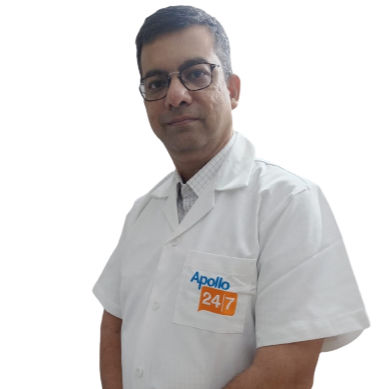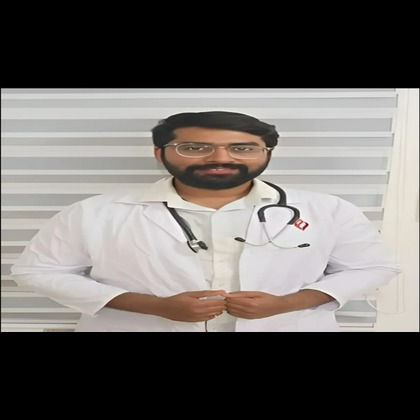Guide to Minimally Invasive Cardiac Surgery
"Explore our comprehensive guide to Minimally Invasive Cardiac Surgery (MICS). Learn about the benefits, procedures, recovery, and find out if you're a candidate for this advanced, less-invasive approach to heart surgery."

Written by Dr. Siri Nallapu
Reviewed by Dr. Rohinipriyanka Pondugula MBBS
Last updated on 25th Sep, 2025

Introduction
Facing heart surgery can be a daunting prospect. For decades, the image of traditional open-heart surgery—a large chest incision, a long recovery, and a prominent scar—has been the standard. However, medical technology has advanced dramatically, offering a less intimidating alternative for many patients: minimally invasive cardiac surgery. This approach allows surgeons to perform complex heart procedures through small incisions, using specialized instruments and cutting-edge technology. This comprehensive guide will walk you through everything you need to know about minimally invasive cardiac surgery, from how it works and who it's for, to the significant benefits and what you can expect during recovery. Our goal is to empower you with knowledge, so you can have an informed discussion with your cardiac care team about the best path forward for your heart health.
What is Minimally Invasive Cardiac Surgery?
Minimally invasive cardiac surgery is an umbrella term for a range of surgical techniques performed on the heart through small incisions, often between the ribs, instead of a large incision down the center of the chest (sternotomy). The fundamental goal is to achieve the same life-saving results as traditional surgery while causing less trauma to the body.
The Core Principle: Smaller Incisions, Faster Healing
The core idea is simple yet revolutionary. Instead of splitting the breastbone to access the heart, surgeons make incisions that are typically only 2 to 4 inches long. Through these "ports," they insert a tiny camera (endoscope) that projects a high-definition, magnified view of the heart onto monitors in the operating room. Specialized, long-handled surgical instruments are then used to perform the delicate procedure. This approach minimizes damage to muscles and bones, which is the primary reason for the dramatically faster recovery times associated with these procedures.
How It Differs from Traditional Open-Heart Surgery
The differences between the two approaches are significant:
Incision: Minimally invasive uses small incisions on the side of the chest; traditional uses a 6-8 inch incision down the center.
Bone Cutting: Minimally invasive typically avoids cutting the sternum; traditionally requires the sternum to be split open.
Recovery: Hospital stays are often shorter (3-5 days vs. 5-8 days), and the return to normal activities is much quicker with minimally invasive techniques.
Pain & Scarring: Patients generally experience less pain and are left with smaller, less noticeable scars.
It's important to note that not all heart conditions can be treated with a minimally invasive approach, and the decision is always made by a multidisciplinary team based on the patient's specific anatomy and medical condition.
Common Types of Minimally Invasive Heart Procedures
Several complex heart operations can now be performed using minimally invasive techniques. The most common include:
Consult Top Specialists
Minimally Invasive Coronary Artery Bypass Grafting (MIDCAB)
This procedure is used to treat blocked coronary arteries. In a MIDCAB procedure, often referred to as "keyhole" bypass, the surgeon makes a small incision on the left side of the chest to access the left anterior descending (LAD) artery. This allows the surgeon to bypass the blockage without stopping the heart or using a heart-lung machine in many cases. A minimally invasive bypass surgery is a highly specialized procedure best performed by experienced surgeons.
Minimally Invasive Valve Surgery
This is one of the most common applications. Surgeons can repair or replace both the aortic and mitral valves through small incisions.
Mitral Valve Repair/Replacement: Often done through a right mini-thoracotomy (a small incision under the right breast).
Aortic Valve Replacement (Mini-AVR): Performed through an upper mini-sternotomy (a small, inverted T-shaped incision at the top of the sternum) or a right chest incision.
Robot-Assisted Heart Surgery
This is the pinnacle of robotic-assisted surgery for the heart. The surgeon operates from a console, controlling robotic arms that hold the surgical instruments and camera. The system provides a 3D, high-definition view and filters out hand tremors, allowing for extreme precision. This is commonly used for mitral valve repairs, atrial septal defect closures, and tumor removals.
Catheter-Based Procedures (TAVR & MitraClip)
While technically not surgery, these transcatheter procedures are the ultimate in minimally invasive treatment. They are performed through a small puncture in the groin or chest, threading a catheter to the heart.
TAVR (Transcatheter Aortic Valve Replacement): For patients with severe aortic stenosis who are high-risk for surgery.
MitraClip: A clip is delivered via catheter to repair a leaky mitral valve.
Top 5 Benefits of Choosing a Minimally Invasive Approach
The advantages of these advanced techniques are compelling:
1. Reduced Trauma and Pain: By avoiding large incisions and bone cutting, patients experience significantly less postoperative pain.
2. Shorter Hospital Stay: Many patients go home in 3-4 days compared to a week or more with traditional surgery.
3. Quicker Recovery and Return to Normal Life: The faster recovery means most patients can return to work and daily activities within a few weeks instead of several months.
4. Lower Risk of Infection: Smaller incisions and less tissue exposure lead to a dramatically reduced risk of major surgical site infections.
5. Less Blood Loss and Scarring: The precision of the techniques results in minimal blood loss, and the small incisions lead to cosmetically superior results.
Are You a Candidate? Understanding Eligibility
Not every patient is a candidate for minimally invasive cardiac surgery. The ideal candidate is determined by a thorough evaluation by a cardiologist and a cardiac surgeon. Factors they consider include:
The specific heart condition: Some complex multi-vessel diseases or certain anatomical variations may still require a traditional approach.
Overall health and age: While often ideal for older or higher-risk patients, factors like severe lung disease or obesity can affect eligibility.
Previous surgeries: Scar tissue from prior chest surgeries can make a minimally invasive approach more challenging.
If you are exploring treatment options for a heart condition, it is crucial to consult a specialist who can assess your eligibility for these advanced procedures. You can connect with experienced cardiac surgeons online through Apollo24|7 to discuss your specific case.
What to Expect?: The Surgical Journey from Pre-Op to Recovery
Before the Surgery: Preoperative Planning
This phase involves detailed imaging (CT scans, echocardiograms) to create a 3D map of your heart, allowing the surgeon to plan the procedure with precision. You will also undergo standard pre-operative tests, which Apollo24|7 offers a convenient home collection, to ensure you are fit for surgery.
During the Procedure: A Step-by-Step Overview
You will be under general anesthesia. The surgical team makes the small incisions and inserts the camera and instruments. The heart-lung machine may be used, but often through smaller cannulas in the groin. The surgeon then performs the operation while watching the magnified view on the monitor.
The Recovery Roadmap: Hospital Stay to Home
Hospital Stay (3-5 days): You'll likely spend a day in the ICU before moving to a step-down unit. You will be encouraged to sit up and walk within a day or two.
First Few Weeks at Home: Focus on rest, wound care, and gradual walking. Pain is manageable with oral medication.
Cardiac Rehabilitation: A structured program of exercise and education is key to a full recovery and long-term heart health.
Potential Risks and How They Are Managed
While safer in many respects, minimally invasive cardiac surgery carries risks similar to traditional surgery, such as bleeding, infection, stroke, or arrhythmias. The risk profile, however, is generally lower. The specific risks can include injury to surrounding structures or the potential need to convert to an open procedure mid-surgery if complications arise. These risks are minimized by the surgeon's experience and careful patient selection.
Key Takeaways for Patients
Minimally invasive surgery offers a safer, less painful alternative to traditional open-heart surgery for eligible patients.
Benefits include smaller scars, shorter hospital stays, and a much faster return to normal activities.
Procedures range from robot-assisted surgery to catheter-based interventions like TAVR.
Candidacy depends on your specific heart condition, anatomy, and overall health.
A thorough evaluation by a specialized cardiac team is essential to determine the best approach for you.
Consult Top Specialists
Conclusion
The field of cardiac surgery has been transformed by minimally invasive techniques, offering new hope and significantly improved outcomes for patients facing heart procedures. These advancements mean that the journey to better heart health no longer has to be defined by a long and painful recovery. By understanding the options, benefits, and process, you can become an active participant in your healthcare decisions. If you or a loved one has been diagnosed with a heart condition that may require surgery, the most important step is to seek a consultation with a qualified cardiothoracic team to explore whether you are a candidate for these modern, life-enhancing procedures. Take the next step for your heart health today by booking a consultation to discuss your options.
Consult Top Specialists

Dr. Rajib Ghose
General Physician/ Internal Medicine Specialist
26 Years • MBBS
Kolkata
B Ghose Foundation Doctor's Chamber, Kolkata
(50+ Patients)

Dr. Mohammed Kamran
General Practitioner
5 Years • MBBS, FIDM
Nashik
Apollo 24|7 Clinic - Maharashtra, Nashik

Dr. Dhankecha Mayank
General Practitioner
6 Years • MBBS
Hyderabad
Apollo 24|7 Clinic - Telangana, Hyderabad

Dr. Rajib Ghose
General Physician/ Internal Medicine Specialist
25 Years • MBBS
East Midnapore
VIVEKANANDA SEBA SADAN, East Midnapore

Dr. Chethan T L
General Physician/ Internal Medicine Specialist
5 Years • MBBS, MD, DNB (General Medicine)
Bengaluru
Apollo Medical Center, Marathahalli, Bengaluru
More articles from Heart disease
Frequently Asked Questions
1. What is the success rate of minimally invasive heart valve surgery?
Success rates are very high, often exceeding 95% for procedures like mitral valve repair, and are comparable to, if not better than, traditional open surgery in experienced centers. Long-term outcomes are excellent.
2. How long does it take to fully recover from a robotic heart surgery?
While many return to light activities within 2-3 weeks, a full recovery, including returning to all normal activities and completing cardiac rehab, typically takes about 6-8 weeks. This is significantly faster than the 3-6 months often needed for traditional surgery.
3. Is minimally invasive surgery more expensive than open-heart surgery?
The initial cost of the procedure may be higher due to advanced technology. However, the overall cost is often lower because of the significantly shorter hospital stay, reduced need for blood transfusions, and faster return to work.
4. Are the results of a minimally invasive procedure as durable as open surgery?
Yes. For approved procedures like mitral valve repair or bypass grafting, the long-term durability and effectiveness are proven to be equivalent to traditional surgery.
5. What happens if there is a complication during a minimally invasive surgery?
Cardiac surgeons are trained to handle complications. The operating room is always prepared to convert to a traditional open-heart procedure immediately if necessary for patient safety. This is a standard safety protocol.


